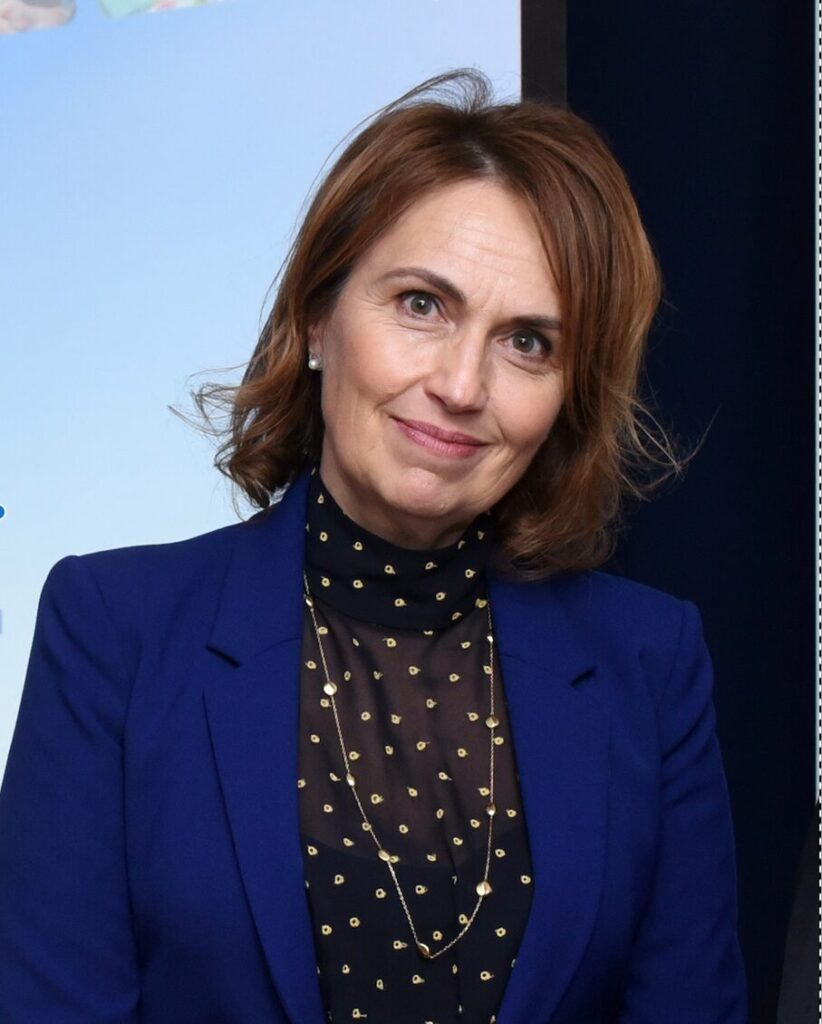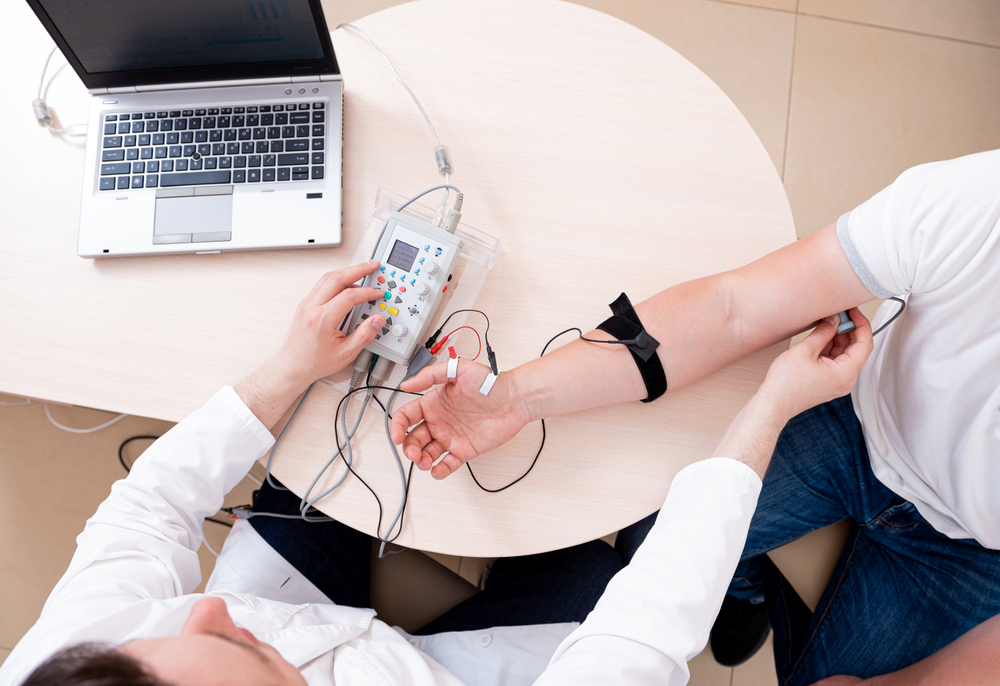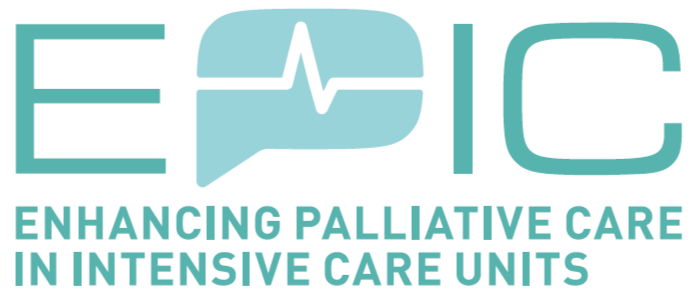ESAIC News
Advancing simulation-based education in anaesthesiology
An interview with Professor Crina Burlacu
The ESAIC Simulation Committee, a pivotal entity in European medical education, is now under the dynamic leadership of its new Chairperson, Prof. Crina Burlacu. In this interview, Prof. Burlacu shares her journey and vision for advancing simulation-based training. She emphasizes the vital role of collaborative initiatives, such as integrating simulation workshops at Euroanaesthesia 24, in enhancing anaesthesiology practice and patient safety. Furthermore, she outlines her plans to seamlessly integrate simulation training into ESAIC’s broader professional education framework, ensuring the production of highly skilled anaesthetists and intensivists across Europe.

Crina Burlacu, congratulations on your appointment as Simulation Committee Chairperson. Could you share insights into your journey in anaesthesiology and what led you to take on a leadership role within ESAIC’s Simulation Committee?
My anaesthesiology career spans over three decades across three different European healthcare systems. I concluded my undergraduate studies in the eastern Romanian city of Iasi and subsequently completed anaesthesiology training in Cluj-Napoca in northwestern Romania. I practised as a specialist and senior specialist in anaesthesiology in the largest tertiary referral university hospital in the Romanian region of Moldavia. I also occupied an assistant professor position in undergraduate and postgraduate education and examinations. I developed an early interest in advanced clinical anaesthesiology, research, education, and professional development.
A constant search for self-improvement made me pursue a career overseas some 25 years ago when I moved to Ireland, thus joining an advanced Western European healthcare system. This opened new professional horizons for me. As well as furthering my clinical career, I pursued fresh academic and research interests, including a Master’s in anaesthesia (including medical education) and a Doctoral Degree. I also spent some time in London in 2007 – 2008, pursuing sub-speciality clinical and simulation-based education fellowships, before returning to Ireland as a Consultant Anaesthesiologist in one of the major university hospitals groups in Dublin and as Director of Simulation Training at the College of Anaesthesiologists of Ireland. This latter role, which I fulfilled for 13 years, has been the turning point in my academic pursuits, as I established and advanced the College simulation training programme for anaesthesiology trainees.
My next professional step was to volunteer my knowledge and experience in support of national and international simulation programmes. I am a co-founder and past Chairperson of the Irish Association for Simulation, and I have collaborated in various roles over the years with international specialist simulation societies. My background, as well as my professional and personal ties to continental Europe, have resurfaced in recent years. I felt like I must play my part in advancing simulation-based education in Europe, particularly in my native Romania. Hence, I was delighted to join the ESAIC Simulation committee at the beginning of 2022 and truly thrilled and privileged to be selected Chairperson earlier this year.
As Chairperson of the Simulation Committee, what are your primary objectives for advancing simulation training within ESAIC and across Europe? How do you plan to address any anticipated challenges in promoting high-quality simulation initiatives and fostering collaboration among ESAIC committees and European centres?
As a member of the ESAIC Simulation Committee, I have worked closely with my predecessor, Prof. Doris Østergaard, and thus actively contributed to several very successful and important projects. My mission is to continue and progress what’s been achieved so far. I feel supported in my endeavours by Professor Østergaard, who is continuing as Past President for another year, and all the other members of the Simulation Committee.
In collaboration with the SESAM Executive and a larger group of international simulation educators, our committee created the first curriculum for simulation-based education in anaesthesiology training. This research, titled ‘Integration of simulation-based education in anaesthesiology specialist training. Synthesis of results from a Utstein Meeting’ was first published online in the EJA in October 2023. The paper contains a wealth of information that will help interested countries with the initiation, development, or advancement of their respective simulation programmes.
Furthermore, in collaboration with SRATI (Societatea Romana de Anestezie si Terapie Intensiva), we have developed, piloted, and continued to assist with the rollout of a National Anaesthesia Simulation Training (NAST) model. A National Advanced Airway Management (NAAM) and a National Obstetric Anaesthesia Training (NOAT) course were conducted in Romania in 2022 and 2023, respectively. More recently, we also conducted a NAAM course in neighbouring Moldova under the umbrella of SARRM (Societatea de Anestezie si Reumatologie din Republica Moldova), with support from WHO and teaching provided by SRATI Faculty. These courses followed a Train the Trainer model aimed at educating and developing simulation leads and a national Faculty pool.
Our committee’s strategic goals are to disseminate the Utstein paper’s learning and implement the NAST model in other aspirant European countries. To this point, we have been promoting the curriculum and Romanian models via scientific abstracts, journals and newsletters, conference posters and oral presentations. But we need to do more. We will conduct an analysis of the factors that have contributed to the success of NAST in Romania. We have planned for a series of networking events during several forthcoming international meetings, including our annual networking event, SimNET, during EA24. The goal is to promote and share the learning and collect feedback from delegates from all corners of Europe. We would like to hear about their needs and perceived obstacles to implementing NAST in their respective jurisdictions.
We have also planned a survey of National Anaesthesia Societies to explore whether there is regulatory, political, and financial support for the NAST implementation. We are proposing a formal application pathway via the ESAIC website, and two programmes will be on offer, i.e. a Course Directors’ Masterclass or an Utstein curricular domain Train the Trainer programme, as the ones successfully piloted in Romania and Moldova. The planning is at an advanced stage, and progress is anticipated after Munich once we will have gathered all the required feedback.
I have had several constructive meetings with other ESAIC Committee Chairs since the beginning of the year, and we will have more once the action pieces start falling into place. I am thrilled to have the full support of Professor Joana Berger-Estilita, Education and Training Committee Chairperson. Our ultimate aspiration is to generate a Whitepaper endorsed by the ESAIC Board, reinforcing the role of simulation in educating highly skilled anaesthesiologists and intensivists and in patient safety.
How do you see the simulation workshops at Euroanaesthesia 24 (EA24) enhancing anaesthesiology practice and patient safety across Europe?
The SimLab and, more recently, the Serious Games have been hugely successful components of EA since their inception. The Simulation Committee has collaborated in the planning and conduction of both. The workshops are normally filled to a maximum capacity, and the feedback has been consistently positive from delegates and Faculty alike. The SimLab scenarios are designed to reproduce real-life crises of the types that could potentially compromise patient safety and lead to poor patient outcomes should inappropriate action be taken. It offers the perfect safe environment to reinforce principles, algorithms and guidelines that underpin good practice and positive patient outcomes. Our SimLab new advertising motto is We Simulate! We reflect! We Learn! Isn’t that just wonderful?
Simulation workshops at EA24 and beyond will continue to provide participants with excellent opportunities to refresh their knowledge, practice their technical skills, and reinforce their social and cognitive (non-technical) behaviours. This learning methodology offers a unique opportunity for simulation-based education in terms of integrating knowledge, skills, and behaviours.
In alignment with ESAIC’s broader Training, Education, and Professional Development strategy, how do you intend to integrate simulation training initiatives into the overall professional education and certification framework? What steps will you take to ensure that simulation training remains integral to ESAIC’s efforts to produce highly skilled anaesthesiologists and intensivists?
The topic of simulation for professional education, continuous professional development, certification and re-accreditation is very interesting and challenging. In the short to medium term, in collaboration with Dr Clement Buléon from Caen, France, we are planning a survey to explore the current use of simulation for continuous professional development and re-accreditation in Europe. We are convinced that we will collect very interesting data, which will inform the strategic plans in the long term.
The status of simulation for anaesthesiology training in Europe is currently diverse, as recent surveys conducted by ESAIC Simulation and Trainees Committees have shown. There are discrepancies in the availability and accessibility of this methodology. Most of the well-developed simulation programmes are concentrated in Northern and Western Europe. There is, however, a significant pool of simulation facilities and other relevant resources in Central and Eastern Europe and the Baltic countries. Most importantly, there are leaders and ‘champions’, and there is commitment. Some colleagues have already sought our support, and others will grasp the opportunity to implement our NAST model should it become largely available.
Implementing NAST in anaesthesiology training and possibly in post-qualification continuous professional development across Europe is a huge project which will take some time. However, our Simulation Committee strategy for 2024-2026 is realistic and doable. It matches the overall ESAIC vision and efforts to produce highly qualified anaesthesiologists and intensivists.
Thank you, Professor Burlacu, for sharing your insights and vision with us.
Professor Crina Burlacu, MD (UCD), MSc (RCSI), FCARCSI, DEAA, FESAIC is a Consultant Anaesthesiologist with the National Cancer Screening Services (NCSS), St. Vincent’s University (SVUH) and St. Columcille’s (SCH) Hospitals in Dublin, and Associate Clinical Professor with the Division of Surgery and Surgical Studies, School of Medicine, University College Dublin (UCD). Having completed a post-CST Fellowship in simulation-based education and training (SBET) in London in 2007, Crina returned to Ireland in 2008 and was appointed Director of Simulation Training at the College of Anaesthesiologists of Ireland (CAI), a role which she occupied between 2008 and 2022. Under her leadership, the CAI was the first Irish Training Body to establish, implement and advance a comprehensive and mandatory SBET programme for anaesthesiology trainees. She is an elected member of the CAI Council.
Crina is Chairperson of the European Society of Anaesthesiology and Intensive Care (ESAIC) Simulation Committee. In this role, she is advocating for the universal integration and standardisation of SBET in anaesthesiology training. She is also part of an international group which has recently published a curriculum for SBET in anaesthesiology training. She has also co-developed, piloted and assisted with the roll-out of a National Anaesthesia Simulation Training (NAST) programme in several European countries.
Crina is a co-founder and the first Chairperson of the Irish Association for Simulation, a role which she fulfilled between 2015 and 2019. She is also an Associate Member of the Society for Simulation in Europe Applied to Medicine (SESAM) Scientific Committee, and a contributor to the SESAM SSH collaborative global consensus on SBET in healthcare. She has also collaborated with the Association for Simulation Practice in Healthcare (ASPiH) in relation to the original and recently renewed Standards for SBE.









